Shopping sales can be a great way to save money on groceries, but not all sales are created equal. Oftentimes, grocery stores use tactics that trick customers like you into spending more money than you’d like.
With inflation already running wild, it’s time to talk about how to spot the best deals at the supermarket and avoid being duped into overspending. In this article, I’m going to take a closer look at the strategies grocery stores use to entice shoppers and show you how to make smarter choices when grocery shopping.
My source? Good ol’ Tom, the butcher who also helped with my article on how to save money when buying meat. He’s worked at various levels of grocery store leadership for 35 years and knows how they think and operate. So let’s start with the basics.
Are Grocery Sales Even Worth It?
Not every type of grocery sale will be worth buying. However some, like markdown and loss leader sales, can be extremely good deals and worth catching. Just make sure you don’t buy a ton of other, overpriced items in the same shopping trip, or your savings will be cancelled out by overspending!
The most accurate way to truly track whether a sale is a good deal compared to the item’s normal price is to keep a price book. A price book, as I describe in my article describing how to make a DIY price book, is a way of comparing food prices.
In a price book, you’ll note the everyday prices of the items you tend to buy most, or that are most expensive. Whenever you see that item go on sale, you can compare the sale price to the normal price. If it’s only a savings of a few pennies, you can feel confident letting the sale go. But if it’s something like 50% off, or the savings equal multiple dollars, go ahead and stock up!
Of course, there’s another, faster ways to determine whether a grocery sale is a good deal (though it’ll be slightly less accurate than a price book). Knowing one type of sale from another can give you the confidence to say “yes” to the good ones, and ignore those more likely to be a marketing scam. Here are the six most common types of sales you’ll see in an average grocery store, and a quick explanation of each.
Loss leader sales
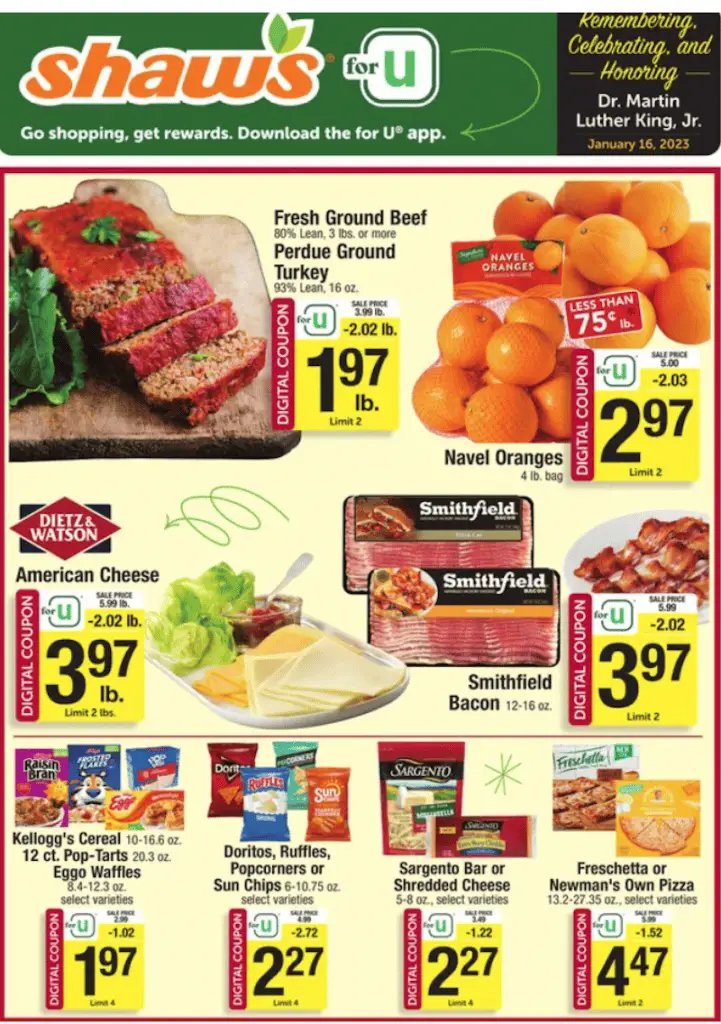
The biggest, most effective sales you’re likely to find in a grocery store are known in the industry as “loss leader” sales. They’re called this because the store is selling the product at a loss to themselves (losing them money) in the hopes that it “leads” you into the store to buy other things at higher prices.
Depending on the time of year and how badly the store wants to draw you in, loss leader sales can be 75% off normal prices.
How do you find a loss leader sale?
Check the very top of the store’s weekly flyer. Usually, stores use products that are typically more expensive like meat or fresh fruits & vegetables for their loss leaders. The closer to the top of the flyer a sale is listed, the better deal it is relative to the others that week. For example, the sale on ground beef for $1.97 at the top is EASILY a better and more rare deal than the $2.27 bar of cheese at the bottom of the flyer.
If you didn’t know, you can basically ignore the other pages of “sales” in a weekly flyer. They’re usually only savings of a few pennies compared to their average price.
Of course, some weeks offer bigger discounts through loss leaders than other weeks. If you try to keep a stockpile, not every week will be a “buy three months’ worth of chicken” level of sale. But if you just focus on buying enough for each week and want to get the best prices, focusing on the loss leader sales will get you the best bang for your buck.
Which stores offer loss leader sales?
Good question! Not every store uses a loss leader strategy to bring customers into their stores. Stores with “everyday low prices” like Walmart do not use loss leaders.
Instead, look for stores that offer weekly flyers (also called weekly ads, specials, or deals) including but not limited to:
- Albertson’s
- Publix
- Kroger
- Safeway
- H-E-B
- Meijer
What if the store runs out of the loss leader sales?
This can sometimes happen if a store wasn’t expecting a sale to be as popular as it was. Luckily, you don’t have to miss out on savings just because the store predicted wrong.
If you’re sure the store is out of a product (meaning someone went out back to check and confirm), head to the checkout section. Ask the cashier or have them ask the front end manager for a rain check, which is basically a coupon promising you that product at that price for one time in the future.
Each store handles rain checks slightly differently, but you can read my article all about rain check policies at 20 different grocery stores if you’d like more information.
Markdown sales (Sometimes called “Manager’s Sales”)
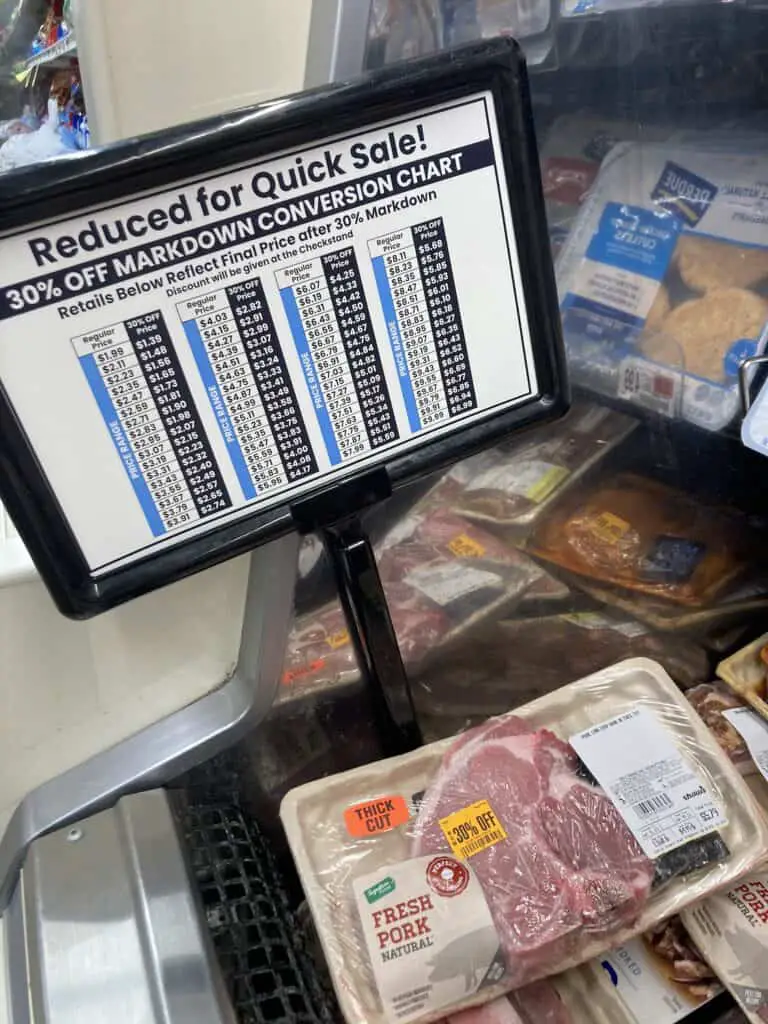
When a store has a markdown sale or a markdown section of the store, they’re trying to sell food that’s going to go out of code soon. They’re hoping to avoid a total loss of profit, and would rather take some money rather than throw the product away and earn no money.
These are GREAT sales to take advantage of if you can eat the product the day you buy it, or (if it’s a freezable food) you have room in your freezer at home. If so, you can store it there to prevent it from going bad in the immediate future.
Some stores have designated sections and signs pointing to the markdown section. Other times, you might only happen find markdowns while doing your regular browsing or if you ask an employee. Finally, some stores won’t really do markdown sales at all, and instead donate food close to its expiration date to food pantries for a tax deduction.
It might also be worth asking an employee which times or days of the week they add new items to a markdown section. Every chain and individual store has their own routine and way of doing things, so it’s worth understanding the rhythm of the stores near you.
Clearance sales
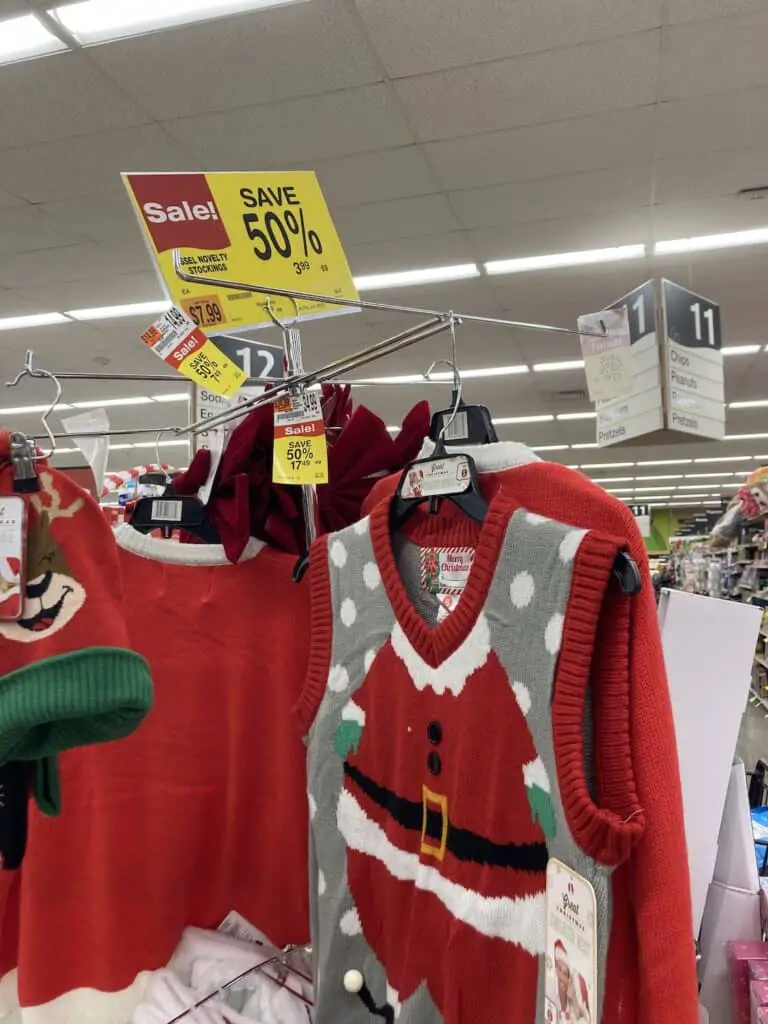

These sales are designed to “clear” out space the store needs for something else. They’re often products that ended up being unpopular, or items the store misjudged and bought too much of.
These sales are only worth getting if you’d normally buy the item anyway. Sometimes, when our brains see the word “sale,” we assume buying the item is a smart use of our money. If you actually needed another bottle of Worcestershire sauce, great! However, if you really don’t need an ugly Christmas sweater or nacho-flavored bubblegum, it’s better to keep walking.
Endcap sales
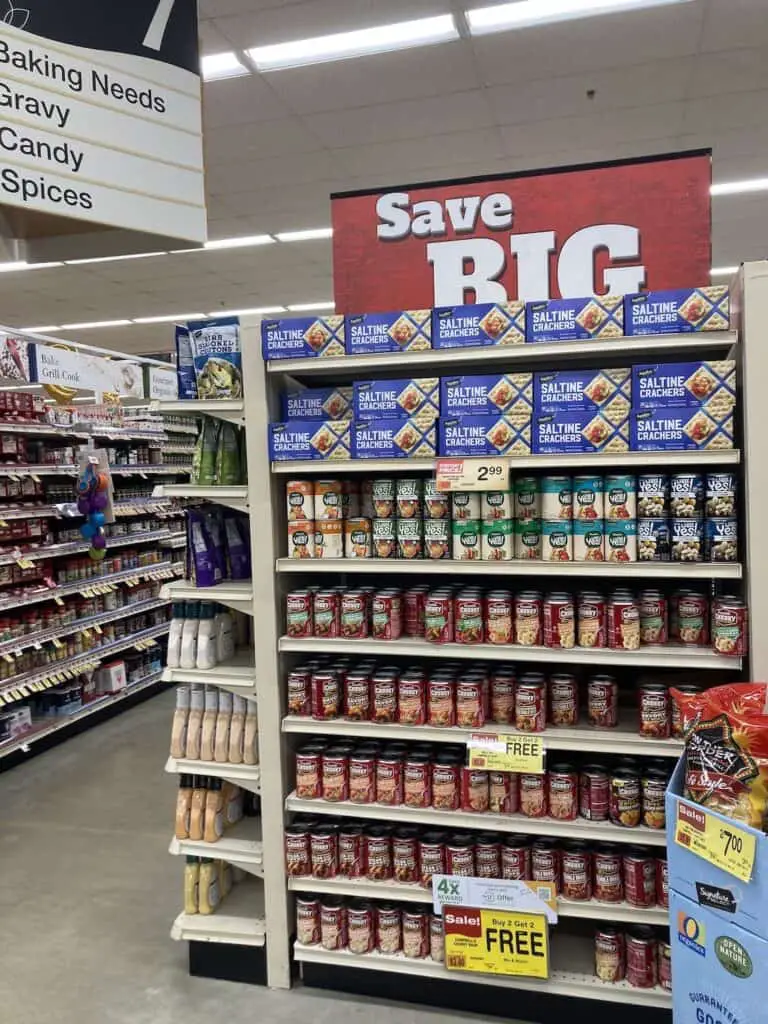
The endcap is the section of an aisle that faces the front or back of a store. Without fail, you’ll notice every endcap has its own type of sale, every single day of the week.
These sales take advantage of the shopper who just meanders up and down each aisle, forcing them to see dozens of ‘sales’ before checking out. More often than not, there’s nothing too special about the endcap deals- just clever marketing.
Sales near the registers
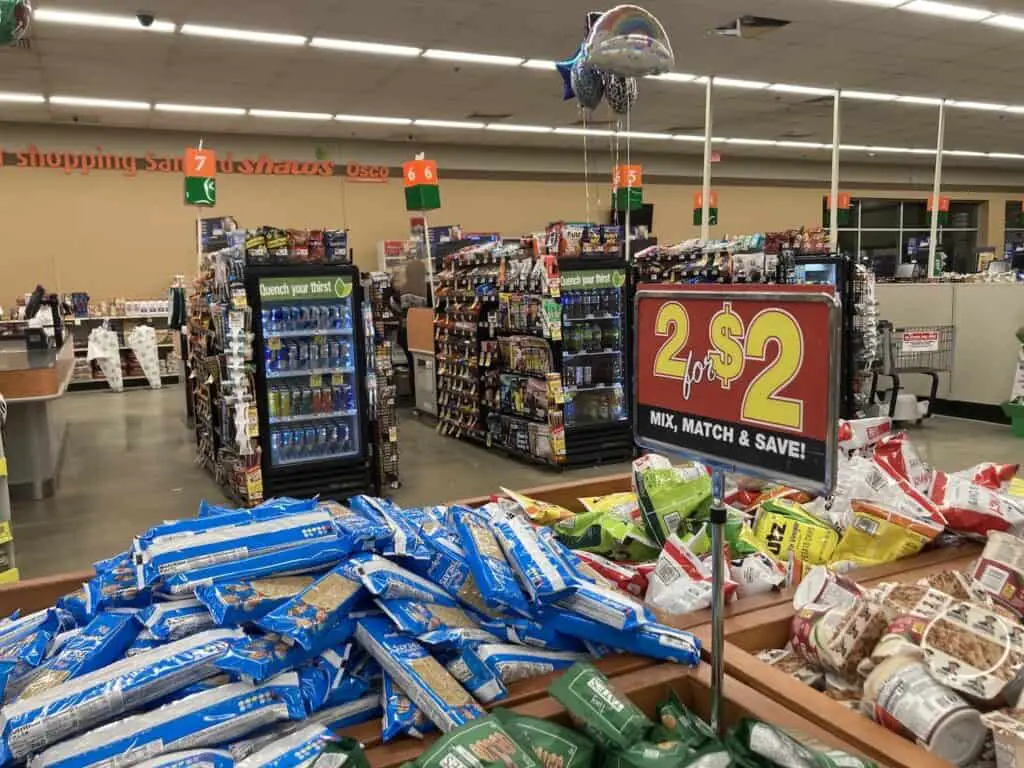
Most grocery stores have special bins or low shelving in the big empty space before the registers. These are PRIME real estate for food companies who want to get your eyeballs on their products, usually while you’re waiting in line to check out.
Like endcap sales, register sales are usually ho-hum, fairly normal prices for the items displayed. However, they’re often tied to an upcoming holiday or celebration, or a junk food product you might pick up if you’re hungry and waiting in line. (Notice in the above picture: chips, cookies, and another treat take up 75% of the bin space.)
More than earning you a good deal, the word “sale” at the register is just to make you feel better about giving into a craving.
“Everyday low price” sales
The times when the word “sale” is on the same sticker as the words “everyday low price” (or similar) is the least likely to be a good deal.
You could have probably guessed this because the idea of a normal price as a special deal is kind of an oxymoron, but it’s worth repeating. The only way you save money by buying an “everyday low price” sale is if you’d otherwise go to a different store with a lower price for the same product.
Otherwise, not buying the product at all, or buying a generic version, are better ways to save money.
There you go! All the different types of grocery store sales you’re likely to see during your next shopping trip. If you’d like more tips on how to save money on your food budget, you can subscribe to my weekly newsletter below for a notification the next time I post an article.
